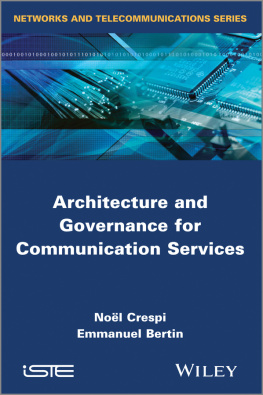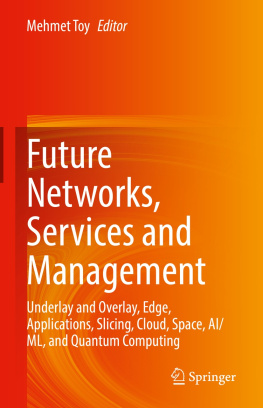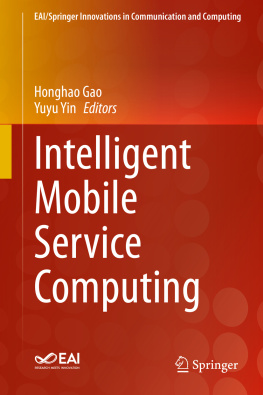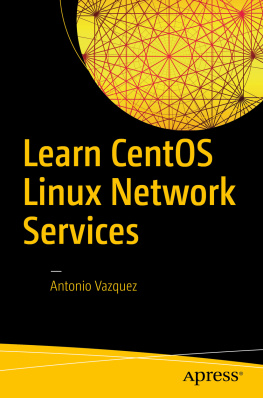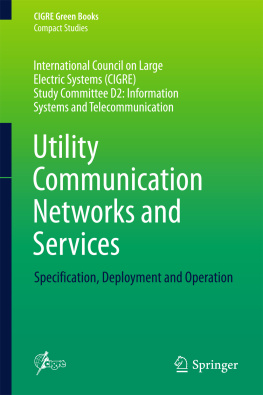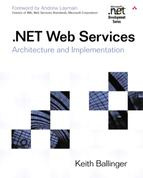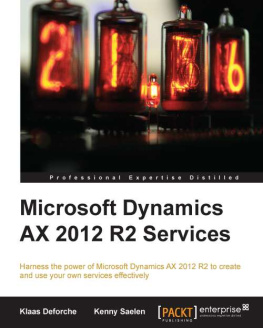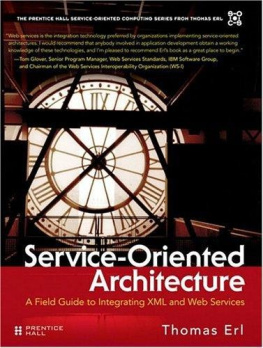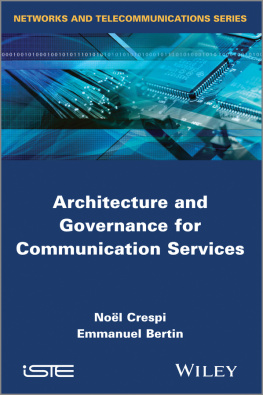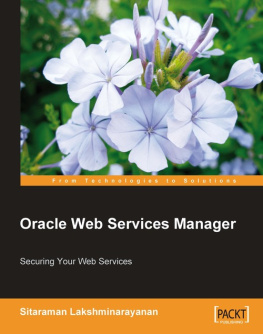

First published 2013 in Great Britain and the United States by ISTE Ltd and John Wiley & Sons, Inc.
Apart from any fair dealing for the purposes of research or private study, or criticism or review, as permitted under the Copyright, Designs and Patents Act 1988, this publication may only be reproduced, stored or transmitted, in any form or by any means, with the prior permission in writing of the publishers, or in the case of reprographic reproduction in accordance with the terms and licenses issued by the CLA. Enquiries concerning reproduction outside these terms should be sent to the publishers at the undermentioned address:
ISTE Ltd
27-37 St Georges Road
London SW19 4EU
UK
John Wiley & Sons, Inc.
111 River Street
Hoboken, NJ 07030
USA
ISTE Ltd 2013
The rights of Emmanuel Bertin and Nol Crespi to be identified as the authors of this work have been asserted by them in accordance with the Copyright, Designs and Patents Act 1988.
Library of Congress Control Number: 2012954576
British Library Cataloguing-in-Publication Data
A CIP record for this book is available from the British Library
ISBN: 978-1-84821-491-0

Foreword
This book constitutes a significant advance for architects in building communication services. The authors address the challenging issue of compiling together service concepts gathered from various communities, such as from Telco, the Web and information technology (IT) sectors, to present a clear method for designing service architectures using different perspectives: business, functional, technical and applications.
The book provides a very coherent flow. This allows the reader to obtain an in-depth knowledge on the topic when read sequentially, but at the same time each chapter is self-contained enough so that the reader can comprehend each one separately.
Its broad analysis of the communication service area, the technically sound treatment throughout, combined with a deliberately structured writing approach make this book suitable for various purposes. First, it establishes a solid survey for newcomers to communication services; those who wish to learn about existing architectures in different domains and communities. Second, it stands as a must-have reference for graduate and undergraduate courses that include service communication topics. Third, this book is a key tool for professionals who work in the area of communication services, as it will help them to better understand the concepts they are handling every day, and to define more precisely the functional and technical requirements of service architectures by formalizing them with a simple method. This book will be a valuable resource for network operators and service providers in their design and organization of telecommunication services.
Finally, the book merges perfectly the background of its authors and incorporates, on the one hand, the pedagogy that leads to very enjoyable reading and, on the other hand, the usefulness and timeliness of a relevant problem that is becoming a core issue for major players in the current Internet era.
Thomas Magedanz
Professor of the chair for Next Generation Networks at TU Berlin
Director of the Next Generation Network Infrastructures (NGNI)
Competence Center at Fraunhofer Institute FOKUS
Germany
February 2013
Introduction
Communication service architectures have been the object of numerous studies. More recently, evolutions (revolutions) in technology, markets and usage have forced us to reconsider how we describe these architectures.
In effect, telecoms services are no longer the prerogative of operators. Service providers without a network make use of the universal network, the Internet, to provide their services, such as Skype, Google and YouTube. They do not rely on a network architecture to provide their services, but on technical architectures that come from the Web and information technology (IT) worlds. These service providers, who generally have a revenue model based on advertising, have greatly changed telecom services by giving a greater consideration of the user of a service rather than of the client of a network access offer.
Communication services hence are evolving rapidly. They are no longer limited to interpersonal vocal communication, but integrate functions such as email, address books and instant messaging. The emergence of social networks which may also include these features is another important element of this transformation. Content services are becoming flagship services, and prototypes allow them to be paired up with conversation services. As a way to best manage and profit from this abundance of services, some service providers are offering users the tools to combine different service features or even assemble services to respond to their specific needs. The boundaries between different services are becoming ever less defined. For example, contacts in an address book service can be used both when sending an email and when making a telephone call. Thus the user can access an environment where services are capable of interacting with each other.
Today, the idea of building a monolithic application containing all services is an illusion at least for reasons of technical feasibility of upgradability (for the introduction of new features). Service architectures are becoming more and more complex as they are composed of a multitude of interacting modules.
If the description of network architectures is relatively clear, being based on the results of decades of standardization, the description of communication service architectures is much less defined. Terms denoting a technical environment for the execution of informatics applications are often used, such as application server (AS) and service platform or service delivery platform (SDP), to indicate the service rendered, for example referring to telephone AS or presence AS. Moreover, telcos tend to standardize enablers i.e. reusable applications in the frameworks of different services to provide frequently used functions, without clarifying the construction methods of these enablers or distinguishing between the enablers that provide a service to users and those that provide a technical facility.
This book proposes a general framework to better describe communication service architectures. It aims both to formalize these architectures by using a syntax and a semantics that are common to different services, and to respond to recurring questions about service design, such as the identification of the functional coverage of enablers or service-oriented architecture (SOA) services, the relevance of service compositions to the user, and the communication between services in a converging environment.
We begin by analyzing the existing methods of describing service architectures in telecoms, Web and IT communities in Chapter 1. Next, we present an overview of communication services in Chapter 2. We discuss the changes in these communication services, matching them most generally with the service sector of the economy. This step leads us, in Chapter 3, to propose invariants for the formalization of communication service architectures across three views of reference: a business view, a functional view and a technical view. Chapter 4 deals with case studies, illustrating these different views and their implementation to describe service architectures. Finally, we finish with Chapter 5, where we highlight the added value of this method through examples of organizational and software applications.
Next page
